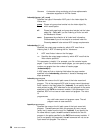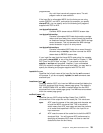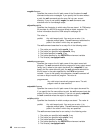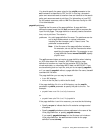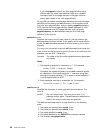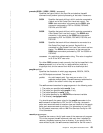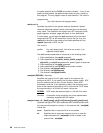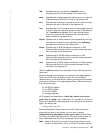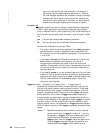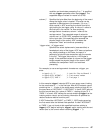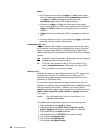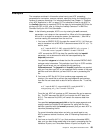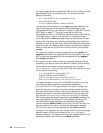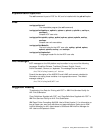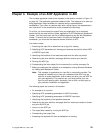
| type, you must specify both resource types. For example, if
| you request that just page segments be saved in a resource
| file, and the page segments are included in overlays, the page
| segments will not be saved in the resource file, because the
| overlays will not be searched. In this case, you would have to
| request that both page segments and overlays be saved.
trc={yes | no}
Specifies whether the input file contains Table Reference Characters
(TRCs). Some applications may produce output that uses different
fonts on different lines of a file by specifying TRCs at the beginning of
each line after the carriage-control character, if one is present. Values
are:
yes The input file contains table reference characters.
no The input file does not contain table reference characters.
Consider the following when you use TRCs:
The order in which the fonts are specified in the chars parameter
establishes which number is assigned to each associated TRC.
For example, the first font specified is assigned 0, the second font
1, and so on.
If you specify trc=yes but TRCs are not contained in the file, the
acif command interprets the first character (or second, if
carriage-control characters are used) of each line as the font
identifier. Consequently, the font used to process each line of the
file may not be the one you expect, and one byte of data will be
lost from each line.
If you specify trc=no or you do not specify trc at all, but your data
contains a TRC as the first character (or second if carriage-control
characters are used) of each line, the acif command interprets the
TRC as a text character in the processed output, rather than
using it as a font identifier.
trigger
n
={
record
| *},{
column
| *},{'
trigger value
' |
X
'
trigger value
'}
Specifies the locations and values of data fields within the input file
that are to be used to define indexing groups in the file. These data
fields are referred to as “triggers” because their presence in the file
triggers a processing action. A maximum of four trigger parameters
can be specified. The number of trigger
n
parameters required to
uniquely identify the beginning of a group of pages within the file is a
function of the complexity of the application output. trigger1 is special
and each record in the file containing this value is referred to as an
indexing anchor record. The presence of a trigger parameter causes
ACIF to index the input file. Each trigger
n
parameter comprises three
values:
record
| * Specifies the relative record number from the indexing
anchor record (that is, trigger1). A value of ‘*’ can only
be specified in trigger1; this value indicates that every
record should be checked for the presence of the
trigger1 value. After the trigger1 value has been found,
all other trigger
n
parameter values are specified as a
relative offset from trigger1. ACIF reports an error
46 ACIF User’s Guide



